Cast Iron
The presence of graphite in cast iron has excellent wear resistance. Rust generally only appears on the outermost layer, so it is usually polished.
Even so, there are special measures to prevent rust during the casting process, that is, a layer of asphalt coating is added to the surface of the casting, and the asphalt penetrates into the pores on the surface of the cast iron to prevent rust.
The traditional process of producing sand mold casting materials is now used by many designers in other newer and more interesting areas.
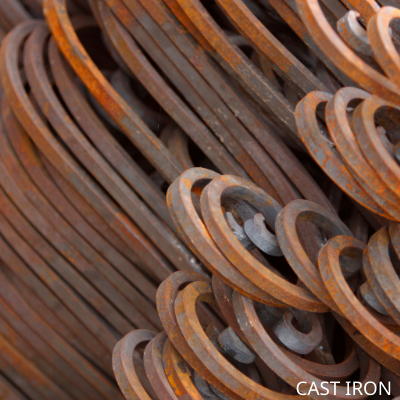
Material characteristics
Excellent fluidity, low cost, good wear resistance, low solidification shrinkage, very brittle, high compressive strength, and good machining properties.
Typical use
Cast iron has a history of hundreds of years of application, involving construction, bridges, engineering parts, household appliances, and kitchen appliances and other fields.
Stainless Steel
Stainless steel is an alloy made by incorporating chromium, nickel and other metal elements into steel. Its non-rusting property is derived from the composition of chromium in the alloy. Chromium forms a strong, self-repairing chromium oxide film on the surface of the alloy.
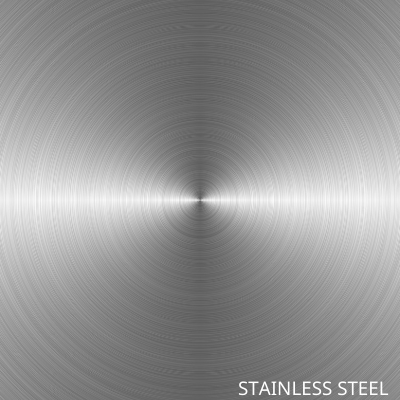
Material characteristics
Health care, anti-corrosion, fine surface treatment, high rigidity, and can be formed by various processing techniques.
Typical use
Among the commonly used primary color stainless steels, austenitic stainless steel is the most suitable coloring material, which can obtain a satisfactory color appearance and shape.
Austenitic stainless steel is mainly used in decorative building materials, household goods, industrial pipes and building structures; martensitic stainless steel is mainly used to make knives and turbine blades; ferritic stainless steel is corrosion-resistant.
Mainly used in durable washing machines and boiler parts; composite stainless steel has stronger corrosion resistance, so it is often used in corrosive environments.
Zinc
Shining silver and slightly blue-gray, it is the third most widely used non-ferrous metal after aluminum and copper.
Zinc castings are very common in our daily lives: the materials under the surface of the doorknob watch layer, faucets, electronic components, etc., zinc has extremely high corrosion resistance, this feature makes it have another most basic function.
Namely as the surface coating material of steel. In addition to the above functions, zinc is also an alloy material for synthesizing brass with copper.
Its corrosion resistance is not only applied to the steel surface coating-it also helps to strengthen our human immune system.
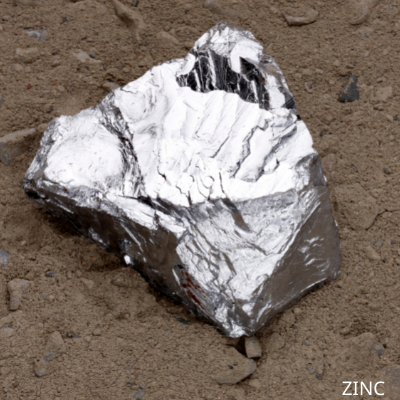
Material characteristics
Health care, anti-corrosion, excellent castability, excellent corrosion resistance, high strength, high hardness, cheap raw materials, low melting point, creep resistance, easy to form alloys with other metals, health care, at room temperature It is fragile and malleable at around 100 degrees Celsius.
Typical use
Electronic product components. Zinc is one of the alloy materials that form bronze. Zinc also has sanitary and anti-corrosion properties. In addition, zinc is also used in roofing materials, photo engraving disks, mobile phone antennas, and shutter devices in cameras.
Aluminum
Aluminum, this white metal with blue light, is extracted from bauxite containing 50% alumina (also known as bauxite). Aluminum, which exists in minerals in this form, is also one of the most abundant metal elements on our planet.
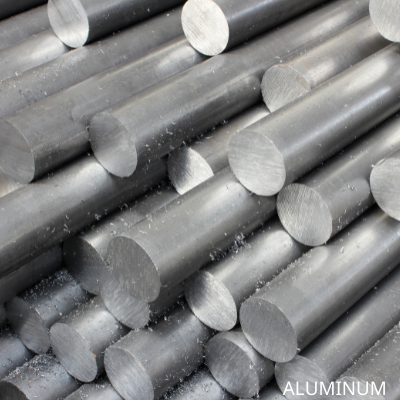
Material characteristics
flexible and plastic, easy to alloy, high strength-to-weight ratio, excellent corrosion resistance, easy to conduct electricity and heat, and recyclable.
Typical uses
vehicle skeletons, aircraft parts, kitchen utensils, packaging and furniture. Aluminum is also often used to reinforce some large building structures, such as the statue of Eros on Piccadilly Circus in London, and the top of the Chrysler Automobile Building in New York. Aluminum has been used as a reinforcement material.
Magnesium Alloy
Magnesium is an extremely important non-ferrous metal. It is lighter than aluminum and can be combined with other metals to form high-strength alloys.
Magnesium alloys have light specific gravity, high specific strength and specific stiffness, good thermal and electrical conductivity, and good damping reduction. It has the advantages of vibration and electromagnetic shielding performance, easy processing and forming, and easy recycling.
But for a long time, due to high price and technical limitations, magnesium and magnesium alloys have only been used in a small amount of aviation, aerospace and military industries.
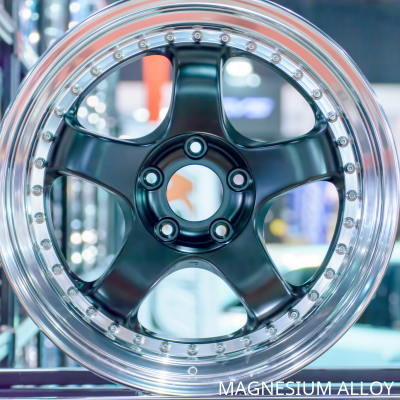
The proportion of magnesium alloy is 68% of aluminum alloy, 27% of zinc alloy, and 23% of steel. It is commonly used in auto parts, 3C product shells, building materials, etc. Most ultra-thin laptop and mobile phone casings use magnesium alloy as the casing.
The corrosion resistance of magnesium alloy is 8 times that of carbon steel, 4 times that of aluminum alloy, and more than 10 times that of plastic. The corrosion resistance is the best among alloys.
Commonly used magnesium alloys are non-flammable, especially when used in automobile parts and building materials, which can avoid instantaneous combustion. The reserves of magnesium in the earth's crust rank 8th. Most of the magnesium raw materials are extracted from seawater, so its resources are stable and sufficient.
Material characteristics
lightweight structure, high rigidity and impact resistance, excellent corrosion resistance, good thermal conductivity and electromagnetic shielding, good non-flammability, poor heat resistance, and easy recycling.
Typical use
Widely used in aerospace, automotive, electronics, mobile communications, metallurgy and other fields.
Copper
Copper plays a very important role in modern society: it is widely used in building structures as a carrier for transmitting electricity. In addition, it has been used by people of different cultural backgrounds for thousands of years as a raw material for making body decorations.
From the initial simple decoding and transmission to the key role played in complex modern communication applications, this malleable, orange-red metal has accompanied our development and progress all the way.
Copper is an excellent electrical conductor, and its electrical conductivity is second only to silver. In terms of the time history of people's use of metal materials, copper is the metal with the longest use for mankind, second only to gold. This is largely because copper mines are easy to mine and the copper industry is easier to separate from copper mines.
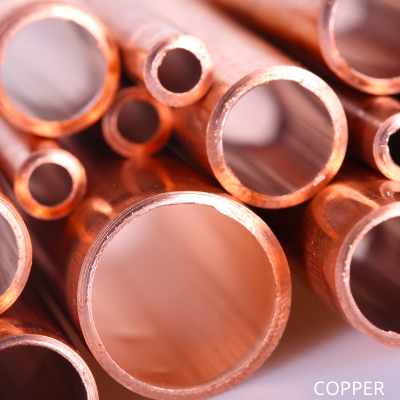
Material characteristics
good corrosion resistance, excellent thermal conductivity, electrical conductivity, hardness, flexibility, ductility, and unique effects after polishing.
Typical applications
wires, engine coils, printed circuits, roofing materials, piping materials, heating materials, jewelry, cooking utensils. It is also one of the main alloy components for making bronze.
Chromium
The most common form of chromium is used as an alloying element in stainless steel to enhance the hardness of stainless steel. Chrome plating process is usually divided into three types: decorative plating, hard chrome plating and black chrome plating.
Chromium plating is widely used in the engineering field. Decorative chromium plating is usually used as the outermost layer to be plated on the outside of the nickel layer. The plating layer has a polished effect like a mirror.
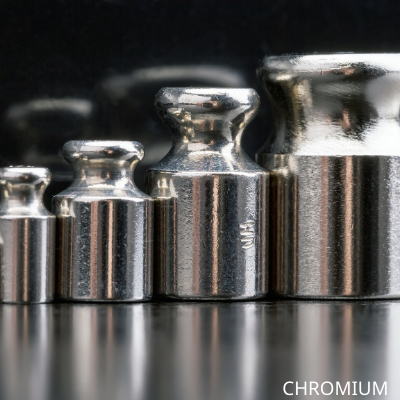
Material characteristics
very high finish, excellent corrosion resistance, hard and durable, easy to clean, low friction coefficient.
Typical use
Decorative chromium plating is the coating material for many automotive components, including door handles and buffers. In addition, chromium is also used in bicycle parts, bathroom faucets, furniture, kitchen utensils, tableware, etc.
Hard chrome plating is more used in industrial fields, including random access memory in job control blocks, jet engine components, plastic molds, and shock absorbers. Black chrome plating is mainly used for musical instrument decoration and solar energy utilization.
Titanium
Titanium is a very special metal. It is very light in texture, yet very tough and corrosion-resistant. It retains its own color for life at room temperature. The melting point of titanium is similar to that of platinum, so it is often used in aerospace and military precision parts. After adding electric current and chemical treatment, different colors will be produced.
Titanium has excellent characteristics such as low density, high temperature resistance, and corrosion resistance. The density of titanium alloy is half that of steel and the strength is similar to that of steel; titanium is resistant to high temperatures and low temperatures. High strength can be maintained in a wide temperature range of -253℃~500℃. These advantages are necessary for space metal. Titanium alloys are used to make rocket engine shells, artificial satellites, and spacecraft.
Titanium is a pure metal. Because of the "pureness" of titanium metal, when a substance comes in contact with it, there will be no chemical reaction. In other words, because of the high corrosion resistance and stability of titanium, it will not affect its essence after long-term contact with people, so it will not cause people's allergies.
The biggest disadvantage of titanium is that it is difficult to extract. This is mainly because titanium can combine with oxygen, carbon, nitrogen and many other elements at high temperatures. Therefore, people once regarded titanium as a "rare metal". In fact, the content of titanium accounts for about 6‰ of the weight of the earth's crust, which is more than 10 times more than the sum of copper, tin, manganese, and zinc.

Material characteristics
very high strength, excellent corrosion resistance in weight ratio, difficult to cold work, good weldability, about 40% lighter than steel, 60% heavier than aluminum, low conductivity, low thermal expansion, and high melting point.
Typical uses
golf clubs, tennis rackets, portable computers, cameras, suitcases, surgical implants, aircraft skeletons, chemical appliances, marine equipment, etc. In addition, titanium is also used as a white pigment for paper, painting, and plastic.
Get more info, please visit our CNC Turning Parts or Products.
Contact us for your customized metal parts.